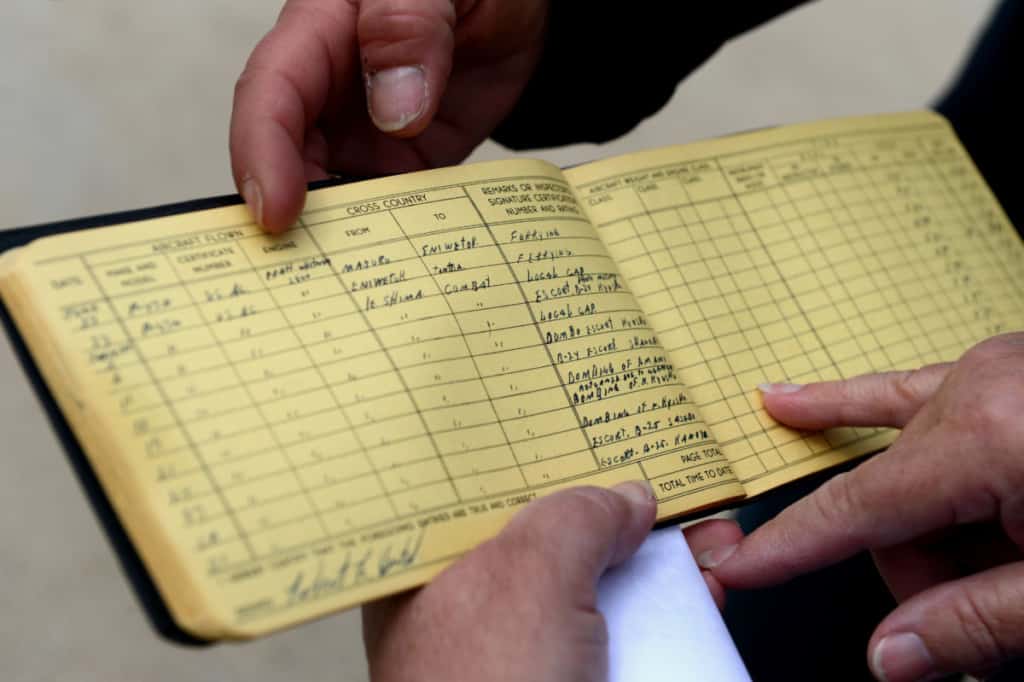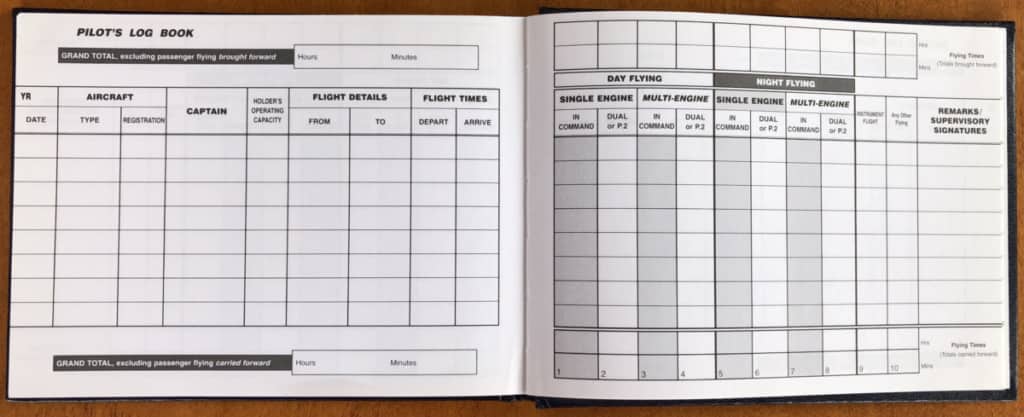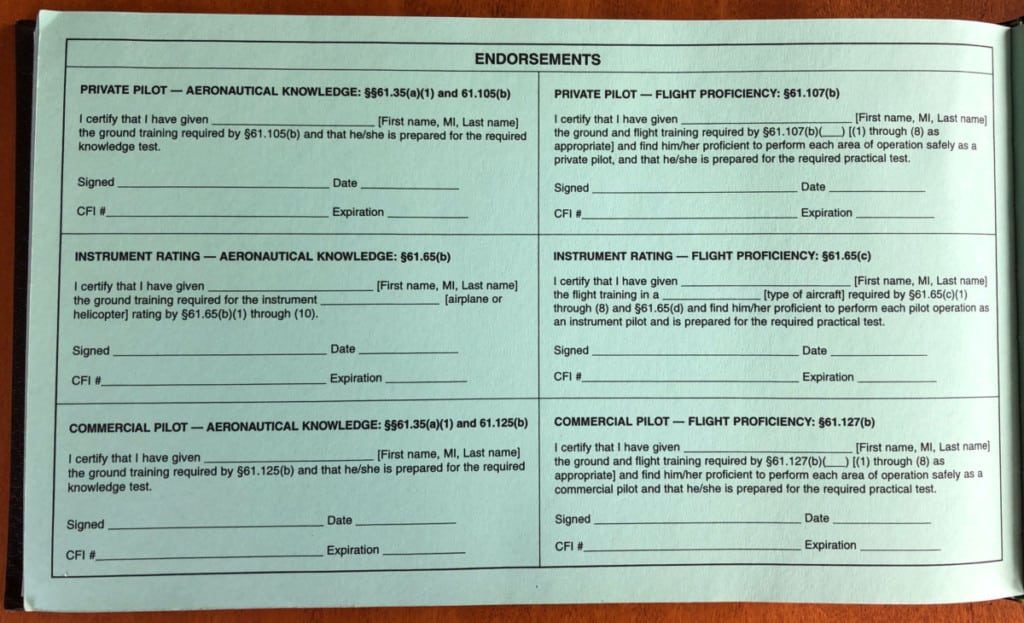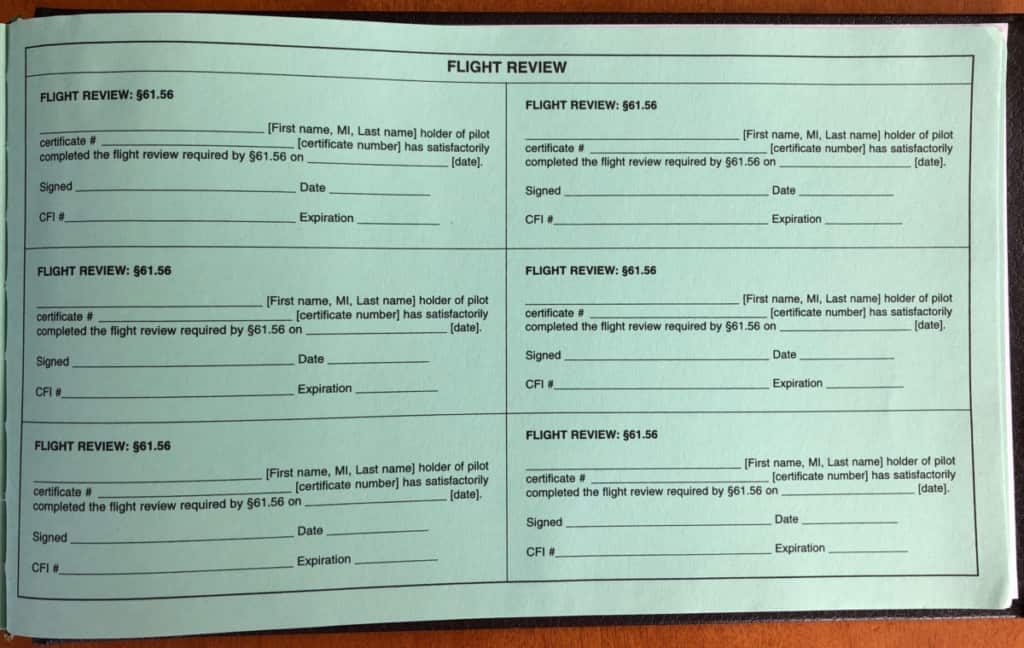
Filling out the first line in your pilot logbook is a memorable occasion that pretty much every pilot remembers. That very first step to becoming a pilot is on its way and from that point on your record of experience has begun!
A Pilot’s Logbook is a paper or digital document used to log every flight flown with the details of that flight. They document flight times, types of aircraft flown, types of flying situations flown and record memories and significant events. Logbooks are official proof of flying experience.
A well-kept, neat logbook is not only great for a personal record but until the pilot is very experienced pilot a logbook is essential and in some cases can make the difference of a pilot securing that dream job! Find out how…
Where Did Pilot Logbooks Originate?
Some of the oldest logs originate from shipping. The Captain’s Log was a record that was used to keep a running journal of things aboard ship and pertinent information that could later be referred back to.
Aviation pioneers Orville & Wilbur Wright were known to have kept detailed ‘Field Reports’ of every flight they made to help document their findings. This was the beginning of the pilot logbooks we know today. Their reports are housed at the Smithsonian Institute in Washington DC.
What Is The Purpose of Logbooks?
When proof is needed by a pilot applying for a job, for an audit by the FAA, or when involved in an accident the logbook is the main document that is referred to. Pilots use the logbook to track their various flying experiences by hours, the hours in specific aircraft, and many other flying experiences.
To be able to accurately maintain track of all the different types of hours a pilot flies, some form of document or table is needed. This is where their pilot logbook comes in.
There is no legal requirement for a pilot to have a logbook, or for a logbook to be formatted in a specific manner but there are several elements that are required to be documented according to 14 CFR §61.51(b) Pilot Logbooks.
Things like date, aircraft registration, type of aircraft, location, and flight time are just some of the data required. Because of this, it is just easier to have a pilot logbook!
When learning to fly it is especially important to be able to document your progress as a pilot. Each license requires specific flight hours to be met and the only way to prove to the examiner is through a logbook. When upgrading to a new aircraft type many examiners need to see hours of training that have been completed on that aircraft before the flight test.
As stipulated by 14 CFR §61.57 Recent flight experience: Pilot in command, to be able to legally carry passengers the pilot needs to have documented that they have completed a minimum of 3 take-offs and 3 landings within the last 90 days. For carrying passengers at night that pilot then also needs to document they have completed 3 take-off’s and landings at night within the preceding 90 days.
The pilot could prove this using purchase receipts for the aircraft rental, but what if they owned the aircraft?? This is where the logbook comes in!
What Is In A Pilot Logbook?
A pilot logbook is made up of a table with columns to input flight hours and rows to input each flight. This table approach allows for easy entry of every flight which then breaks down the specific details of that flight. Each day flown the pilot will fill out the table with the data required.

Some of the most basic logbooks give you space to log the fundamental elements to a flight, but then the professional logbooks are much bigger with many additional columns to really break up the flight elements.

In addition to providing space for the pilot to log each flight, there are also tables for tracking time in different types of aircraft, yearly totals, and also a section for endorsements, flight reviews & proficiency checks.


These sections make it really simple for any examiner, inspector or future employer to instantly ensure you are proficient and up-to-date. It also keeps all your authorizations and sign-offs from your instructor in a neat, easy-to-find manner.

Join My Newsletter & Get Great Tips, Information and Experiences To Help You Become a Superb Pilot!
Do Pilots Need to Carry a Logbook?
Logbooks are usually not required to be carried by pilots when they fly due to the possibility of accidental loss or destruction of the logbook. However, during solo training cross-country flights, they must be carried and also contain the necessary endorsements from their instructor to remain legal.
According to 14 CFR §61.51(i) Pilot Logbooks these are the instances where a pilot must carry their logbook during a flight:
- A Student Pilot on a solo cross-country flight as part of their training
- A Sport Pilot
- A Recreational Pilot
- A Flight Instructor with Sport Pilot rating
These pilots can only fly with endorsements authorized by their instructor and if challenged by an inspector their logbook must be in the aircraft and contain the valid authorization signatures.
False Information in Pilot Logbooks
A pilot’s logbook is a personal document that can only have entries made by the pilot or with authorization from the owner. Because of this, it is a self-reporting document and also a declaration of honesty to the FAA. However, some pilots have been known to ‘Fudge The Numbers’
Falsifying hours is a serious No-No and if the pilot is caught the penalties can be severe.
There are several ways a pilot can be caught:
- A pilot who claims to have xx amount of hours but is not at that standard is instantly noticeable to an experienced pilot. I have personally seen this and that pilot lost instant credibility and was soon shown the door.
- An inspector can spot-check your logbook and call companies to check their aircraft logs to see if they match.
- Job interviewers can ask you questions about your experience. Vague and shady answers from someone who should know is an instant red-flag!
- If the pilot has an accident or incident the FAA/NTSB can do a full check into the pilot’s experience. Any falsified records will soon be discovered
The aviation world can be very small and it does not take much for the word to spread about a dishonest pilot, it can then make it very tough for that pilot to gain employment.
I know many Chief Pilots who come into the pilot lounge and ask “Hey, does anyone who this pilot?” any “No, don’t hire them!” from any of their guys is an instant resume in the garbage!
Falsifying a logbook is an instant disclosure of dishonesty and if the pilot is found to be lying then what stops them from not owning up to an aircraft limitation exceedance or close calls when they are out on their own?!
Learn More…
Try These Articles:
* Helicopter or Airplane: Which is Easier To Fly?
* What Age Can You Learn To Fly? All Ages Explained
Are There Different Types of Pilot Logbook?
There are two types of pilot logbook in use today. A paper book style logbook and a digital database. Most pilots will use only one or the other but some prefer to use both as a backup in case anything happened and one of them was lost or destroyed.
The traditional paper logbook is the one which most pilots begin with and most may continue to fill out for many, many years but there are problems with a paper logbook:
- Easily lost
- Damaged in flood/fire
- Break apart after years of use
- Corrections can become scruffy
The best option, in my opinion, is to add an electronic logbook to your flight bag as a backup.
Electronic logbooks are a digital copy of the paper one. This can be as simple as your own Excel spreadsheet (Mine has been going strong since 2002) or one of the many available software or app-based logbooks that are available.
Digital logbooks are great for the following reasons:
- Instant backup with cloud storage
- Hard to lose
- Endless data breakdowns for hours flown
- Easy-to-see graphs and charts of hours
- Easily configurable to your liking
However, you need to be careful of logbook software with monthly subscriptions. A friend of mine had his only logbook copy on this one software and they tripled the price overnight for his subscription. He was at their mercy and with 10,000 hours of flight time, it is taking him a VERY long time to transfer his hours into both a paper logbook and another digital software!
Things To Avoid
Keeping a logbook accurate and honest is only half of the attention it needs. Being able to provide a professional-looking logbook at a moment’s notice can do wonders for your career.
I personally have had chats with pilots on fires or out in the field not realizing they were Chief Pilots or Operations Managers and had several of them tell me to bring me logbook and come for a chat the next day. On-the-spot job offers soon followed.
Your logbook is a clear representation of you as a pilot. If it is clean, neat and up to date it shows how much attention and professionalism you take in your job.
Some of the most common logbook issues that can instantly turn off a future employer are:
Messy
Cluttered, messy, and poor penmanship is an instant way to portray you as a corner-cutter!
Errors
Everyone makes errors. A neat line made with a ruler and initialed with a new line started below is a much neater way to proceed.
Missing Flight Data
If you missed data about a flight what else did you miss? Poor aircraft inspection? Missing data in an aircraft logbook?
White Out
Whiteout in a logbook with paper other than white really sticks out. If your paper is green like mine, just put a line through the mistake and start a new line.
Entries In Pencil
This is a big No-No. All entries should be made in Blue or Black ink. Pencil entries can be altered in the future to help ‘Fudge Numbers’, or at least may appear to!
Regular Updates
Keeping your logbook up to date portrays you as diligent and detail-orientated. Keeping it up to date also ensures you know when you are about to hit any milestones!
Unprofessional Comments
Logbooks are a great place for keeping notes of each flight. I can look back at my flight entries and picture most flights because of the comments but keep them aviation-related and don’t shoot yourself in the foot!
Learn More…
Try These Articles:
* Skills Needed To Become a Pilot? – A Flight Instructors Perspective
* Private Pilot Privileges: What You Can & Cannot Do!

‘Hot Chick On Tour Flight Today‘ or ‘River Run at 10ft‘ could be an instant job killer if you are being quizzed on your logbook at a job interview! Keep it a professional document, but keep notes! It’s great to look back in years or decades’ time!
To Finish
Logbooks are an essential part of a pilot’s belongings, especially when in the early part of a pilot’s career. There are many high-time pilots who no longer keep logbooks as they only need to show recency requirements and this can be done off their payslips.
A pilot with 20,000 hours will not be required to show evidence to an employer! By that time the employers will be knocking on their door!
Keeping both a paper copy and an online digital copy is a great way to start your career, but be sure to update it regularly! I once spent an entire flight over the Atlantic Ocean updating my online copy because I had let I lapse while instructing at a very busy flight school!
For a really Easy-to-Use, Affordable and Accurate Digital Logbook I Highly Recommend:



